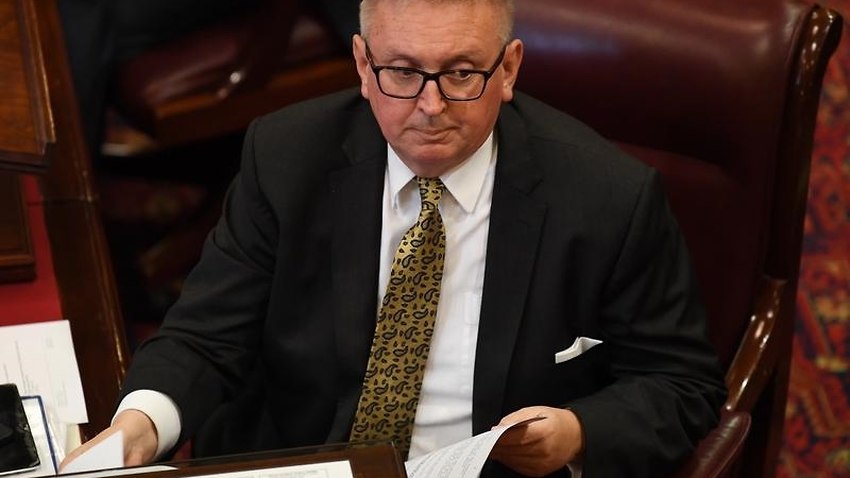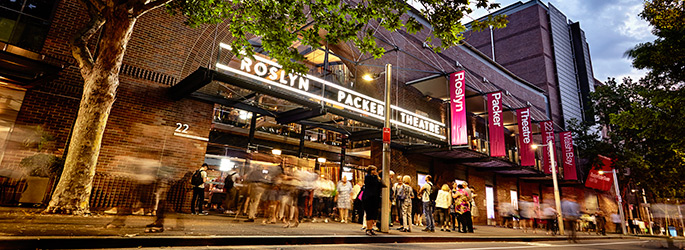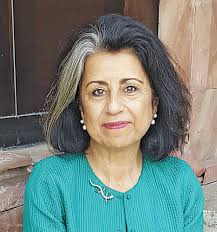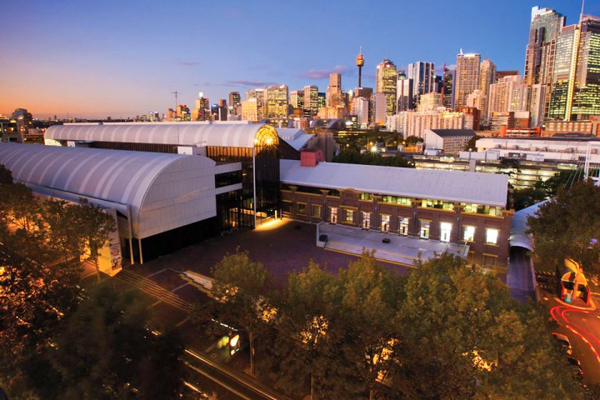Minister Harwin dismisses key report
Buoyed by the re-election of the NSW Berejiklian Government in March, Minister for the Arts Don Harwin is ploughing ahead with the controversial move of the Powerhouse Museum (above) from Ultimo to Parramatta. He has at last responded to the painstaking, long-running Upper House Inquiry into Museums and Galleries, which focused on the affair. His response is to disregard the findings of the Inquiry and the highly experienced professionals who gave detailed evidence to it.
Established in June 2016, the Inquiry committee took 179 submissions, held 12 hearings, listened to evidence from distinguished former directors and trustees and grilled Government officials and former Premier Mike Baird. It heard that the Parramatta site was prone to flooding and unsuitable for housing museum objects; that costs of relocation were certain to blow out; that the new location would be less accessible for most of the State’s citizens; and crucially, that the move puts the museum’s priceless collection at serious risk.

Arts Minister Don Harwin
The conclusions of the committee’s meticulous report, delivered in February 2019, were damning of the Government policy – but Arts Minister Harwin has brushed them aside. In a response received by the Clerk of Parliament on 17 July, he dismissed the Inquiry’s finding that the business case for relocation did not comply with Treasury guidelines for cost-benefit analysis – without even discussing the evidence.
Recommendations ignored
The Inquiry report also made six recommendations – first and foremost Recommendation 1, that the relocation should not proceed. Harwin marks all the recommendations as “noted” but completely dismissed them too, parroting the one-line response: “The Final Business Case for the new museum was approved by cabinet in April 2018 and the NSW Government announced that the Powerhouse Museum will relocate from Ultimo to new premises on the banks of the Parramatta River.”
Recommendations 2, 3 and 4 set out considered alternatives for Ultimo and Parramatta, but they too were brushed aside.
Recommendation 5 was “that the NSW Government exempt state-owned museums from the annual efficiency dividend”. That’s the spending cut that has slashed jobs in cultural institutions to the point that they have difficulty carrying out their basic public service responsibilities. Harwin’s response should send a chill through the entire museum sector. He wrote:
“Since 2004, the efficiency dividend has not been applied to expenses relating to donations, private sector grants and other non-Government revenue received by what were then the five Cultural Institutions – the Art Gallery of NSW, the Australian Museum, the Museum of Applied Arts and Science, the State Library of NSW, and the Sydney Opera House. From 2017-18, this exemption was extended to revenue generated by the then Cultural Institutions from the sale of their goods and services.”
Translated, this means that the Government is forcing cultural institutions to rely on private fundraising and corporatisation rather than public money. It’s a strategy directly opposed to the public service mission of museums and galleries, and it’s inherently dangerous. It took the Art Gallery of NSW more than five years to raise the $100 million in private funds required to supplement the $244 million awarded by the State Government for its proposed Sydney Modern expansion – and we all know that the $344 million estimated cost will blow out massively. How can private money also fund the annual costs of properly running the Gallery and keeping entrance free?
Recommendation 6 of the Inquiry was that in the new Parliament elected in March, a select committee of the Legislative Council – the Upper House – be established to inquire into governance of the arts and culture sector in NSW. (It is high time that governance at other institutions came under parliamentary scrutiny. I made two submissions to the Inquiry about this. They were politely received but I was not called to give further evidence.) Harwin’s response to Recommendation 6 was dismissive: the Inquiry had sat for two-and-a-half years, he said, implying that another one was not required.
The Powerhouse Museum Alliance, which opposes the move to Parramatta, is calling on supporters to write to Legislative Council members (MLCs) urging them to reject the Minister’s response. But the Berejiklian Government juggernaut will roll on. Developers of both the Ultimo and Parramatta sites have “their” government back in power and they will be rubbing their hands.
Arts policy report card

Walsh Bay precinct – costs doubled
Four months after the re-election of the Berejiklian Government, the situation in the arts is looking grimmer than ever.
- Minister Harwin has taken arts grants out of the hands of artist peer assessment bodies and replaced them with “art form boards” appointed by him. Esther Anatolitis, executive director of the National Association for the Visual Arts, says this means “artists will now have to compete directly with requests for major capital infrastructure in one and the same funding round, making NSW likely the only government in the world to end its commitment to artists as central to funding programs”.
- Live music festivals face increasing difficulties in the face of new security and licensing regulations brought in after what Music NSW claims is “little consultation with the industry”. Costs for festival organisers are set to sky-rocket. Already four festivals have been cancelled or downsized in what some say is a rushed, knee-jerk response to recent drug-related deaths.
- The cost of refurbishing the arts precinct at Walsh Bay, one of the Government’s pet projects which included the Sydney Theatre Company’s Ros Packer Theatre, has been upped from $128 million to $245 million. Other projects, especially in the regions, are left wondering what funds will be left for them.
- It appears a sod has yet to be turned for the Art Gallery’s Sydney Modern project – which means there is no chance of it being completed, as originally proposed, in time for the institution’s 150th anniversary in 2021. Why the delay? Could it be that someone in government has finally realised that the estimated $344 million cost of the Albatross on the Harbour is bound to blow out?
Arts Minister Harwin likes to be seen as a “friend” of the arts, notably assuring the National Art School that it will retain its home in the old Darlinghurst Goal – one of the rare positive moves he has made. But he is also Special Minister of State, Leader of the Government in the Legislative Council, Minister for the Public Service and Employee Relations and Minister for Aboriginal Affairs. As a leading Liberal Party fixer and fundraiser, his agenda is to accommodate corporate lobbyists, developers and party donors, and to get public service jobs off the books.
And that’s very bad news for the arts.
Trustee ethics

Resignation: Ahdaf Soueif
Egyptian-British author Ahdaf Soueif has resigned from the board of the British Museum, citing differences with the institution over its sponsorship by oil giant BP, the treatment of museum staff and its silence over issues of restitution. Her statement says she found the museum immovable “on issues of critical concern to the people who should be its core constituency: the young and the less privileged”.
She continues: “The collection is a starting point, an opportunity, an instrument. Will the museum use it to influence the future of the planet and its peoples? Or will it continue to project the power of colonial gain and corporate indemnity?”
Relevant questions for museums everywhere.





Clearly a deal has been done with developers from which this government feels unable, or unwilling to, resile. How else can we explain the cavalier dismissal of recommendations and utter reasonableness of so many caring and expert individuals regarding the ill-planned move of the Powerhouse Museum.
It is hard to believe how ignorant this Government chooses to be! Information is the currency of Democracy but Gladys and her cronies choose to be small minded Authoritarians and this is a combination of negatives that DO REQUIRE some radical resistance strategies, it would seem.
If they choose to ignore facts and the will of the people artists and supporters have no option but to start demonstrating. It would seem that dialogue and diplomacy have failed. Art has greater value to a society than the crudity of Australian Authoritarian Developers!
Judith’s analysis is as astute as it is fair and correct as usual. Permit me, however, to raise possibly a “micro” matter. I now find myself disabled in terms of mobility. Two recent emails from the AG of NSW show the disabled ramp under what appears to be a black wrap.Is this the turning of the first sod? Not that there has been much to draw me to the Gallery recently and I know E. Capon was not enamored of the structure. At least the building “Art Gallery of New South Wales” survives for the moment under that identity. Would the sods dare to vandalize and rebrand in promo material and the building itself as a first step to “Sydney Modern”, so offensive a concept to art lovers in the whole of this State? Secondly, the other side of the coin must not be overlooked. Arts organizers should not be too hubristic either. Sculpture by the Sea is miffed at Waverly Council’s modest proposal for an inoffensive disabled pathway and seems to favor upping stumps – a petty pity.
It is incredible that such dishonesty can be advanced by the State Government in support of its thought bubble decision to destroy the Powerhouse Museum. None of these supposed expert reports have been published. Let’s hope for the Upper House–which has been been treated with virtual contempt–to take action. No doubt people like Mark Latham will be able to add serious weight to this.
After years of pressure on our arts institutions to maximise corporate support, we now arrive at the end game – tipping the balance of support away from government towards corporate and private donors, with all that entails – including the stacking of arts boards with people who have access to money but often minimal knowledge of or interest in the art form, beyond attending glamorous launches, opening nights and functions, and enhancing their resumé. Farewell to contentious, confronting, radical work that might scare off potential donors and sponsors. And now the pressure is also on to increase income from ‘sales of goods and services’ to help pay for the work of our galleries, theatres, museums. Is this the ultimate obliteration of what we traditionally – and rightly – expect from them? Are we facing a kind of arts supermarket, with the prize going to the most successful seller?